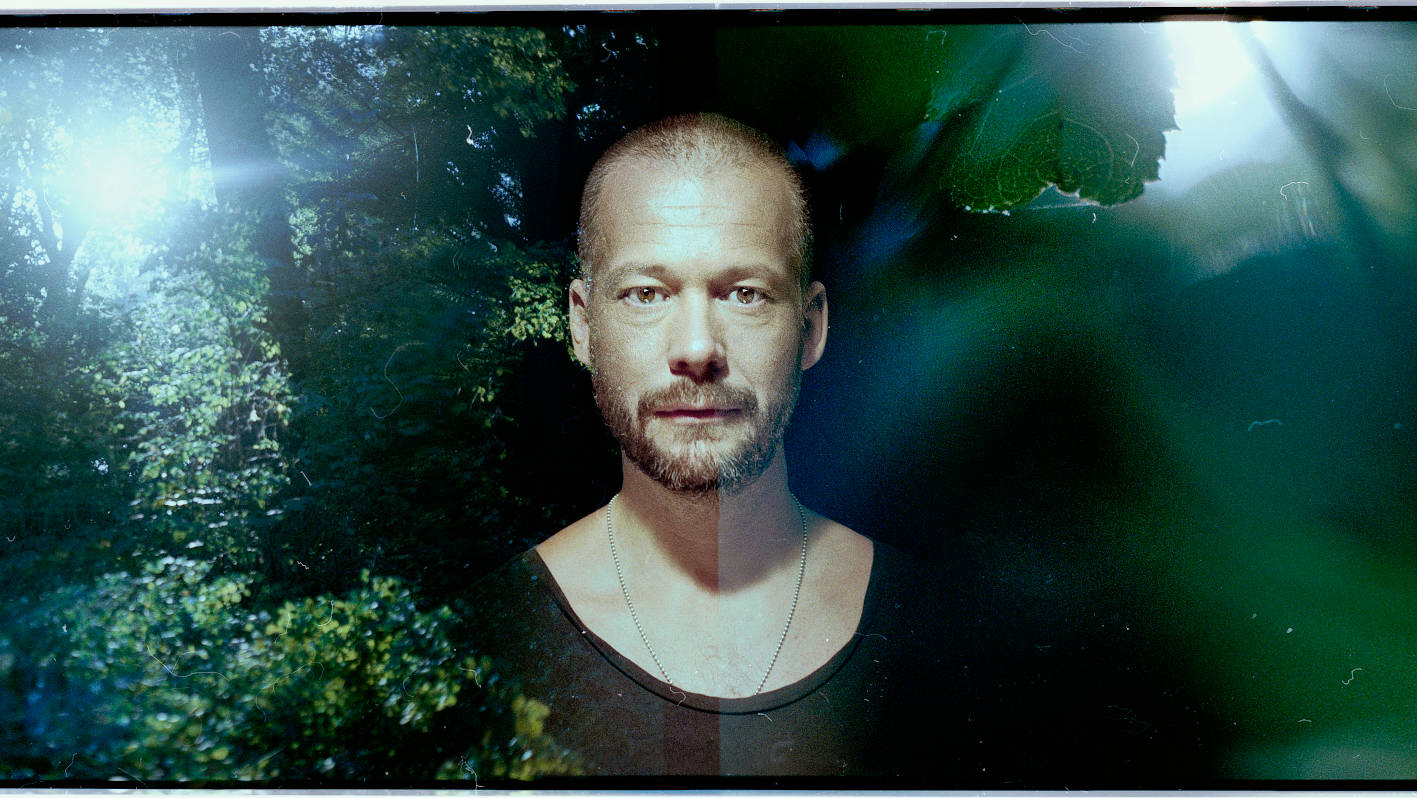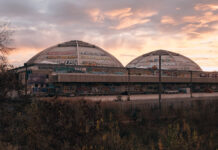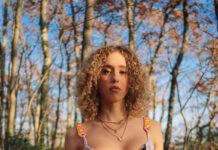Sebastian Mullaert (All photos: Fredrik Altinell)
Hier findest du die deutschsprachige Version des Interviews.
Since composing and performing as half of Swedish minimal house duo Minilogue from the early 2000s up until 2014, classically-trained musician Sebastian Mullaert has put out three solo albums, as well as a host of singles and EPs. His music has been released on Mule Musiq, Hypercolour, and Minus, among others, and strives to incorporate electronic sounds that morph and become, at times reminiscent of an organic, plantlike life cycle. Discovering house and techno in the nineties set Mullaert on a new musical trajectory away from classical instrumentation and towards electronic music—experimentation with the qualities, capabilities, and boundaries of electronic sounds has been a prevailing interest throughout his career. In 2018, he began the Circle of Live event series to provide a venue for informal, freeform improvisation among electronic musicians, a space for both collaborative and independent ventures. An improvisational, even meditative, approach lies at the core of Mullaert’s musical philosophy, one with its roots in the natural world he finds so regenerative and spiritual.
Mullaert’s newest album, Natthall (postponed to September 18th due to the current pandemic), abounds with free-flowing phrases of interwoven classical instrumental and electronic sounds that beckon listeners towards a meditative frame of mind. Natthall conveys sonically the sense of calm we feel after a walk in the woods spent contemplating the landscape and its native animals. For Mullaert, the natural world is infinitely powerful in its capacity to heal and inspire, and the improvisational character of Natthall mimics this healing quality. An intricate, balanced mingling of classical and electronic sonic realms recurs throughout the album and was an important focus for Mullaert, as is his current and ever formative improvisational work.
Your upcoming album is entitled Natthall—is this a Swedish word?
Yeah, “natt,” the first part of the word, means “night,” and “hall” means “cliff” or “burg.” It’s actually a nature reserve next to where I live.
I was wondering about your collaboration with the Tonhalle Orchester in Zürich, which lends a certain lightness, a gentler undertone, to this album. How was it to balance electronic sounds with those of traditional orchestral instruments?
That was one really interesting aspect for me with this project, as I started in classical music and then got into electronic music, and I’ve been doing that for so many years. Now coming back to acoustic and classical again, I’m trying to do those with the perspective I’ve experienced through being an electronic artist. One thing I often feel when I listen to other projects that try to blend these two different sonic worlds is that it’s very easy for one of them to become very prominent and for the other to become almost diffuse in the background—it’s either a little drum machine behind an orchestra or a little string sample within a very electronic production. With Natthall and the project I have now with a Swedish ensemble, we experimented with that specific question—how can we make both parts as active and as important in both the actual mix and the composition?
How did you manage to merge both worlds for this album, working with an orchestra?
For this album I’ve used a very conversational approach that I normally use in my other projects, as well, where I really try to give space and allow something to blossom out. To do that I choose certain instruments that I feel represent, somehow, the sounds that I also use electronically, which are the wind instruments, the strings, and the keys, so piano, harp, violin, cello, clarinet, and horn—all of them somehow correspond to a lot of the other sounds that I normally use when I make music. But it’s not so easy—it’s quite a special, new journey for me to build—it feels like they dance together, and it’s not one part taking up all the room while the other hides in the background.
Do you feel that this use of orchestral instruments is referential to your upbringing in a way, or is it linked to that era of your life, perhaps? A return to your musical origins?
In my upbringing, I only played classical instruments—I didn’t work with electronic ones. My father was extremely into electronic music and he was also a professor at a university, so he used it in his lessons, both with visuals and more psychedelic-electronic music, so we had a lot of electronic instruments at home that I now have in the studio. But when I was young, I didn’t really feel they were real, because I felt that the piano and the violin were the real stuff and what dad had were more like toys, so it’s ironic that later on those were the ones I worked professionally with.
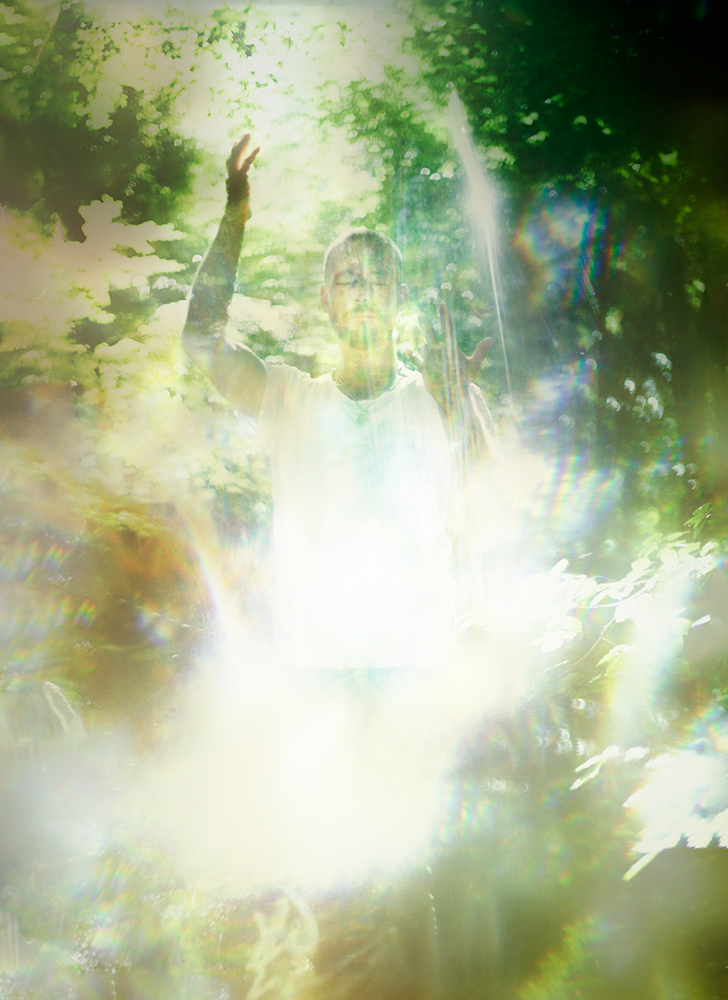
You also grew up playing violin, piano, and organ—you mentioned a sense of balance is really important to you.
In terms of balance, when I sit in the studio and improvise, I try mindfully not to arrange, but to let things happen, and the measurement when you do that is your own taste and your own feeling, so when something feels right, then you do it, and when something feels unbalanced, you automatically try to tune into something more balanced. That’s what I really feel is so beautiful with improvised music—that process is going on all the time, whereas when you prepare something and compose something, it’s very possible that you have an idea of it and you put it down, and then when you try it, you realize it isn’t right. Improvisation is a guide into something that you like. I have a natural longing for balance, which doesn’t need to be perfect, and it doesn’t need to be final, because everything changes all the time, but when you feel balance, it’s right and feels beautiful at that time.
„Very often with electronic music and dance music, it’s more obvious for it to be left minimalistic because you have an audience that is actively dancing.”
What prompted you to incorporate and mix classical elements with electronic ones? Was there a certain energy or mood that could only be conveyed with classical instruments?
There are a few reasons why I really love to mix the two sonic worlds. One is the fact that I really love acoustic instruments—something that vibrates and plays and is alive in that way, in that the sound is created right now. When someone plays the clarinet or the violin or the piano, it will never be the same twice—it depends upon someone making that sound. As much as I love electronic sounds, it’s very difficult to make them come alive and become organic and real when played live in the way an acoustic sound does. And yet electronic sounds have other qualities that acoustic instruments do not have—you can create much more obscure sounds that are impossible to play on an instrument and that also trigger certain emotions and feelings within both listener and musician. When these two come together, I think they each bring a beautiful thing and contribute to each other.
Are there any pieces of classical music that affected you when you were younger and played more violin and piano? Were there any that stuck with you over time?
There are a few that I always played myself—when you are young, everything has a strong impact on you. I played Mendelssohn quite a bit, and one of the first composers I listened to a lot was Edvard Grieg—I remember I bought cassette tapes and listened in my room. I’ve always been very drawn to the impressionists like Debussy and many other French composers. Even though Debussy’s music is completely composed, I still think it has a very free and improvised feel to it. For example, if you listen to Bach or Brahms, you can hear that it’s very structured and that can absolutely be beautiful in a way—I also like Bach—but something in me that wants to be free, and to not be put into a corner or restrained, expands when I listen to music like that of Debussy.
Along those lines, were there any pieces of classical music that either subconsciously or consciously influenced this album?
I haven’t really thought about that so much, actually. From a composition perspective, the electronic music that I make and listen to has a very monotone, minimalistic, sparse aesthetic or expression, while a lot of classical compositions are very full and big and they have a drama, a story. I’m not really interested in creating these kinds of pieces that are extremely epic, as I want to create a sound-space that holds a certain meditative approach to it, which is an intentional step back, leaving space for the listener to explore and express themselves. Often when I write music in the studio or play live, I create—or something is created, I don’t know if it’s me, but something is sounding—I feel that, “wow, here it would be so beautiful to add a melody on top.” I intentionally try not to add something, but instead leave that space empty, because I think a listener can also feel, “wow, this would fit so well.” Somehow it’s that person in that moment who has the room to be creative in their listening process and be part of the composition while it is experienced.
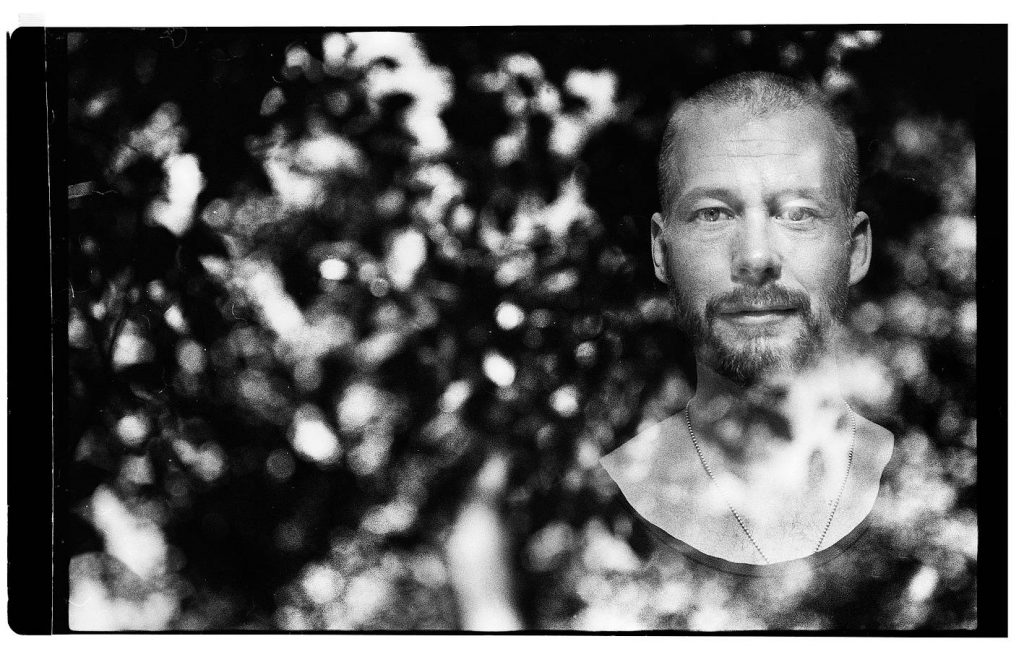
In comparison to live performances at venues like Berghain, for example, would you say that your music in those settings is more florid and embellished than this meditative, reflective sort of music?
I think all the music I do has that meditative touch, even the electronic music—I have the same approach. Actually, what I brought into this project on Natthall comes from my approach to electronic music. Very often with electronic music and dance music, it’s more obvious for it to be left minimalistic because you have an audience that is actively dancing, which is a large part of their own experience, whereas in a seated concert, people don’t have that room to express themselves with their bodies and they can quickly become restless. I want to give people a moment to step away from the restlessness not by pleasing it, but by challenging it.
How does that work?
The improvisational approach is helpful there because to improvise in front of people is a bold situation, where you kind of leave yourself because it can be very bad. It can feel very naked to allow anything to happen. It’s a journey—the music moves through parts where it’s so magical and parts where it is searching, and it’s another way of sharing something very honest. For an audience, that can actually challenge restlessness because they feel like, “it’s happening now and I feel part of it.” Hopefully they feel inspired to be that honest. We don’t need to always polish something—maybe they can take that with them into their normal life after a concert or after listening to the music.
You’ve mentioned the impact nature has on your process and music—these ideas of letting things go where they go, of feeling free to express something organic. I was wondering about your specific corner of the Swedish forest you live in—does the sense of reflection that comes with living so immersed in nature reinforce this musical route you’ve been taking?
Yes, definitely. Wherever you are, you are influenced. Being close to nature is a part of who you are. However, I think there is not much raw, original nature left—most nature, maybe not in Amazonia (although that is also sadly changing), but certainly in Europe, is deformed. Most of it is planned with the intention of producing something that we need as humans. Unfortunately, this is not really a free expression of nature itself because it is so restricted by our needs and wishes as humans, and they are often very monochromatic—if you have a pine forest in Sweden that is planted to be reproduced for timber, in one way it can look very deep and mystical, but it’s a little like asphalt—it’s one species, not a naturally heterogeneous place.
Does the penchant for brooding which goes hand in hand with life in nature reinforce the musical path you have taken?
Around where I live, there are national parks that are left alone. This kind of nature really holds a reminder of the wild, free, and raw that we also are within. When we’re close to something with a strong presence of being itself, it triggers us to feel that we just need to be ourselves and shows us that to be oneself now is actually to be what you are. What you are is not something you can become—you are it already, and that’s exactly the same with nature. If nature is in full bloom and it’s green and we as humans think, “this is beautiful,” nature doesn’t think it’s beautiful, since it’s like that. Going out into nature I feel that it just becomes you—it so strongly speaks to you. It’s probably the quickest, easiest healing process that exists. There are lots of wonderful techniques like meditation and yoga, but one that helps people in their own process is spending time in nature. I also think improvised music can have this very strong, healing, positive effect on people.
The album’s track titles refer to observations of birds or the cyclical movements of natural elements. I found the metaphor of “undressing” the sky (a track title, “Undressing The Sky”) especially beautiful and poetic, and I’m wondering if any specific spaces within the forest evoke something for you?
That place called Natthall feels very special to me. It also has a very strong connection to this project because I went there with the person I work with very closely, and I shared this ambition to return to acoustic and classical music and blend it with my electronic experience. I often feel that in the forest, when you very honestly put out something that you feel for and dream about, somehow it gives energy to manifest itself. I think it’s not by chance that a lot of native human groups had ceremonies in nature. If you actively, with presence, add something to nature, it can multiply itself with an energy.
How do you come up with the names of your tracks? How do you choose them?
My songs are sort of nameless when they happen, and I need some space to listen to them and connect with them afterwards, as a listener, in order to put a name to them. In one way, I don’t like to name things because it can give a certain picture to the listener, and then I take away a certain creative aspect from the listener—especially when it’s abstract music that doesn’t have a specific scenario. At the same time, it’s also an opportunity to inspire with something poetic or metaphorical.
”A friend of mine that I played with in New York was bugging me, like, “what is an ascending bird? What is that?” And I didn’t tell him, because I like people to think about that themselves, but what it means to me is so obvious: That specific thing you can’t spot.“
How do you pick the names of your tracks? What criteria do you use to select them?
A lot of the names on this album have spiritual meanings for me. I imagine myself sitting up on that cliff of Natthall—it’s a 50- or 80-meter-high cliff—looking out over the landscape, seeing a river passing by and occasionally a bird lifting off. All the names have a clearer naturalistic image or physical quality, but all of them also have a symbolic meaning. A friend of mine that I played with in New York was bugging me, like, “what is an ascending bird? What is that?” And I didn’t tell him, because I like people to think about that themselves, but what it means to me is so obvious: That specific thing you can’t spot. You can’t spot your awareness (you can’t say it’s in your head or your leg), but in everything you look at, awareness and presence are there. In some situations, you allow it to be really free, and it grows—instead of just being inside little you, it becomes everything around you. For me that is a very ascending thing that happens, but it’s still spotless, so it’s an honoring to our presence.
Does Natthall feel like a stepping stone towards a new musical trajectory for you, or more of a return to your original or earlier musical intentions?
I definitely see it as a stepping stone into something new. In a way, it’s returning to my roots, in that I played a lot of violin and piano and played a lot of different ensembles and quartets and symphony orchestras, but I never wrote music, so this album doesn’t have much in relation to what I did back then. There is an undertone within me of returning to certain roots that trigger very beautiful feelings in me.
